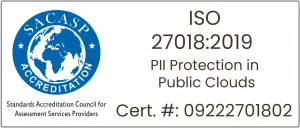The Financial Services Compensation Scheme and Single Customer View are essential to guarantee consumer protection and market stability. The FSCS protects consumers in the case of a financial institution failure, whereas the SCV provides a comprehensive perspective of customers’ interaction with multiple financial service providers. To efficiently carry out these vital activities, accurate and timely data reporting is crucial for financial institutions. This blog will discuss the importance of data remediation procedures in assuring the accuracy and compliance of FSCS SCV regulatory reporting.
Challenges in Data Accuracy
The challenges in data accuracy and consistency can significantly affect FSCS SCV (Single Customer View) regulatory reporting, particularly in maintaining high-quality and accurate SCV files for financial institutions. Here are the issues and the potential impact on FSCS SCV regulatory reporting:
- Data Duplication: Duplicate data can lead to inaccuracies in Single Customer View (SCV) reporting, inflating customer counts, and skewing data analysis. High-risk items include potential duplicate customer IDs, duplicate customer records in output files, same customers in both SCV and Exclusion files, duplicate company registration numbers, duplicate other national identity numbers, duplicate National Insurance numbers, and duplicate passport numbers.
- Inaccurate Customer & Account Holder Information: Inaccurate customer and account holder information can lead to errors, delays, and inefficiencies in FSCS SCV reports. Key inaccuracies include invalid date in customer DOB field, multiple words in forename or surname, invalid UK postcode, incorrect account hold indicator, country code and country name mismatches, special characters in customer details, blank spaces or leading/trailing spaces, generic content in customer name or address field, and missing or invalid contact information.
- Data Format Issues: Data format issues can significantly impact the accuracy and integrity of depositor records, leading to potential compliance issues. High-risk items include field length validation errors, invalid date formats, nonnumeric data, invalid currency codes, incorrect sort codes, invalid data formats for identifiers, improperly formatted exchange rates, address formatting errors, and unusual characters in names and addresses. These issues can lead to data truncation, loss, and system failures.
- Missing Data: Missing data can lead to inaccuracies in SCV reporting, compromising the 24-hour mandate required by the PRA Rulebook. Key issues include missing customer titles, names, address lines, date of birth, currency codes, UK address lines and postcodes, IBAN and BIC, incomplete identification information, invalid product types, and inconsistencies in account information. These issues can impact customer service, compliance, and data integrity, causing potential banking crises and hindering timely compensation.
- Data Validation: Inadequate or no data validation can lead to errors or inaccuracies in data, potentially jeopardising the industry’s ability to prevent banking crises through timely compensation.
If not remediated, these data issues could hinder the correct and timely creation of SCV reports, which are crucial for depositor trust, regulatory compliance, and financial crisis prevention.
Data Remediation & Its Role
Data remediation in SCV reporting is the process of cleansing, organising, and migrating data to ensure that it is correct, secure, and meets regulatory standards as stated by PRA.
- Crucial for data management within the framework of FSCS SCV reporting as it addresses any concerns with the quality, accuracy, and security of the data being reported.
- Identifies and addresses data quality by eliminating errors, inconsistencies, and inaccuracies from data provided issues to avoid erroneous or non-compliant reporting and to prevent penalties or other regulatory ramifications.
- Protects sensitive information to prevent unauthorised access or usage.
- Helps meet regulatory reporting deadlines by ensuring data collection, validation, and submission in a timely manner.
- Standardises data formats, structures, and definitions, ensuring compliance with regulatory standards.
- Documents the process of data validation, correction, and submission, demonstrating compliance with regulatory requirements and insights into data governance practices.
- Continuously enhances data quality, streamlines reporting workflows, and adapts to changing regulatory requirements.
Data Remediation in Regulatory Reporting
Financial institutions must comply with laws and regulations, such as ISO 27001 and SOC2, requiring the protection of sensitive client data.
Changes in regulations, such as new data security requirements, data retention or deletion restrictions, or allowing data subjects the ability to update or change their data, demand the development of a data remediation policy to ensure compliance with FSCS SCV requirements.
To maintain continuous compliance, the data remediation policy should be revised in response to new legislation, certification needs, or updated rules.
Regulatory Considerations: Certain types of data are protected by many different laws that govern their collection, storage, and usage. The GDPR, for example, safeguards EU citizens’ data by establishing particular requirements for data retention, security against attack, and data anonymisation. Compliance with these standards necessitates the use of data remediation solutions tailored to these specific criteria. Organisations must understand the legal landscape and adapt data remediation plans to ensure compliance with applicable laws and regulations.
Encryption Concepts: Encryption is a common way for securing sensitive data in regulatory reporting. The goal of modern encryption algorithms is to put together data in a way that can only be unlocked with the right decryption key. When used as part of a data remediation plan, encryption has the following benefits and considerations:
Advantages of Encryption
- Strong Data Protection: When properly employed, modern encryption techniques provide powerful protection for encrypted data.
- Regulatory Compliance: Encryption is frequently recommended in regulations as a technique of protecting sensitive data.
Considerations for Encryption
- Data Protection: Encrypting data in use can be more challenging without homomorphic encryption, which is often inefficient for production use.
- Data Protection Regulations: Apply to users and systems that have access to unencrypted data, resulting in a large compliance scope.
- Key Management: Ensuring that only authorised users have access to the encryption key and protecting it from disclosure can be difficult.
Audit History in Data Remediation
- The full audit history feature provides a detailed record of data actions, enabling organisations to identify modifications, updates, or deletions.
- It also enables comparison of different data versions, aiding in understanding the sequence of events leading to the current state.
- This feature is crucial during data remediation efforts, enabling prompt and effective resolution of discrepancies, errors, or inconsistencies that may have arisen during the remediation process.
The Process of Data Remediation for FSCS SCV Reporting
The FSCS SCV Data Remediation Process improves data quality and accuracy for regulatory reporting in multiple levels. These procedures involve data cleansing, organisation, and corrections. Additionally, using an auto data cleansing program can help to streamline the process.
Data Cleansing: This is an important phase in the data remediation process. It entails removing erroneous, outdated, and corrupt entries from data sets. Clients can analyse the cleansed data and take necessary actions based on the findings when thorough reports are utilised. Data cleansing eliminates discrepancies and errors in SCV reporting data, improving regulatory reliability.
Data Organising: Structuring data to comply with SCV reporting standards is crucial to data cleanup services. Making data better organised makes it easier to access, analyse, and use for reporting purposes. Well-organised data can improve reporting efficiency and regulatory compliance.
Data Corrections: The data enrichment process entails replacing incomplete or obsolete records with the right data, increasing the accuracy of the organisation’s data set. This step is critical to increasing SCV reporting data quality.
An Automated Data Cleansing Tool: Leverages AI algorithms and can greatly speed up the data remediation process by efficiently detecting and correcting inconsistencies and errors in the dataset. This tool can automatically scan the data, recognise, and fix inaccuracies, outdated entries, and other issues. Organisations can save time and resources by automating this aspect of the data remediation process, while also ensuring that their data is more accurate and consistent.
Ensuring Consistent Compliance with RegData
To ensure regulatory compliance, financial institutions must follow strict Financial Conduct Authority regulations for RegData filings. The FCA’s assessment of a firm’s compliance relies heavily on the timely and accurate reporting of regulatory data. Failure to submit reports can result in disciplinary action and other enforcement procedures. RegData streamlines regulatory reporting processes by offering a centralised digital platform for data collection and management, data format standardisation, and reporting automation.
Data Remediation in SCV Submissions to RegData
- Data remediation ensures data quality assurance by identifying, rectifying, and preventing data quality issues.
- It minimises the risk of data rejection and maintains compliance with FCA regulations.
- It helps validate the compliance of SCV data with FCA regulations and standards.
- It ensures alignment with standardised reporting formats and requirements mandated by the FCA.
- Proactively addressing data quality issues mitigates the risk of non-compliance with FCA regulations.
- Data remediation processes enhance the overall integrity of SCV submissions to RegData, maintaining the trustworthiness and reliability of the information provided to the FCA.
Macro Global's SCV Suite: Your Partner in Data Excellence
Macro Global plays a pivotal role in data remediation and regulatory compliance through its SCV solution suite, encompassing SCV Forza and SCV Alliance. The SCV Forza serves as a powerful automation platform designed to streamline and automate the regulatory reporting process, ensuring efficient validation and compliance with FSCS requirements within 24 hours.
SCV Alliance serves as a comprehensive audit platform with 175 well-classified risks, along with a full audit history and the facility to compare previous versions for benchmarking and tracking metrics for data remediation.
These offerings empower financial institutions with the backing of AI algorithms and fuzzy logic to proactively identify and remediate data-related issues and inaccuracies, thus enhancing operational efficiency and ensuring adherence to regulatory standards.
Discover how Macro Global’s SCV Suite can streamline your data remediation and ensure regulatory compliance. Schedule a demo today to experience the power of automation and audit capabilities in action.
Related Posts
Key Strategies and Best Practices for UK Insurance Firms to excel in FSCS SCV Compliance
Understand how efficient FSCS SCV reporting can be as a strategic advantage for UK insurance firms, improving compliance and operational efficiency.
Best Practices & Strategies Guide for Asset Management & Investment Firms Generate FSCS SCV Reports
Learn how asset management firms can effectively manage their FSCS compliance obligations through robust SCV reporting strategies.
Navigating the Future of Digital Wallets Amid Big Tech Challenges
Discover how Digital Wallets are transforming payments, the challenges they face, and what the future holds for secure digital transactions.



















